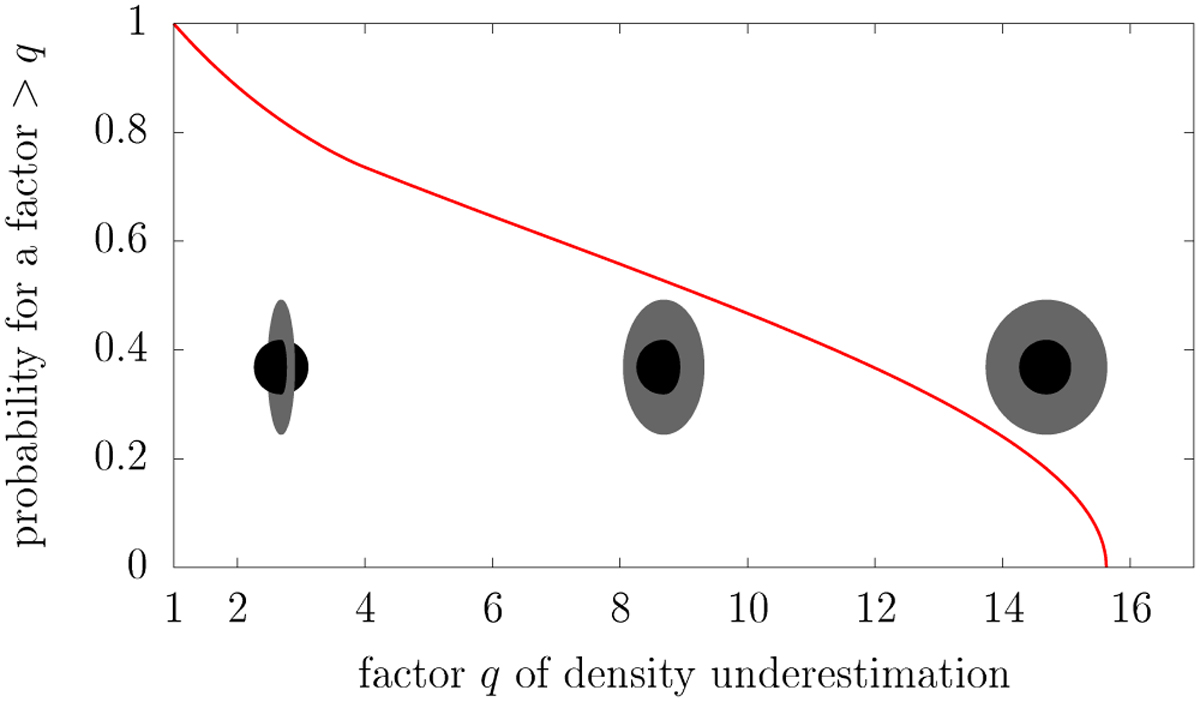Fig. 5

Download original image
Probability of underestimating the density of a transiting exo-planet by a factor q due to the presence of an opaque ring with outer radius 2.5 R and no inner gap. The enhanced transit depth due to the ring is supposed to be fully misinterpreted as an enlarged planetary radius. The red curve is obtained by computing the ring inclination required to divide the measured planet density by a factor q, and by assuming that the inclination of the ring (or equivalently, its precession angle ψ; see text) is uniformly distributed between 0 and 2π. The three planet pictures show the approximate geometries corresponding to the factor q in abscissa. The probability goes from 1 at q = 1 (exact edge-on configuration) to 0 at q = 2.53 (exact face-on configuration). In case it possesses a ring, planet HIP 41378 f would have q ≈ 13 (Akinsanmi et al. 2020).
Current usage metrics show cumulative count of Article Views (full-text article views including HTML views, PDF and ePub downloads, according to the available data) and Abstracts Views on Vision4Press platform.
Data correspond to usage on the plateform after 2015. The current usage metrics is available 48-96 hours after online publication and is updated daily on week days.
Initial download of the metrics may take a while.


